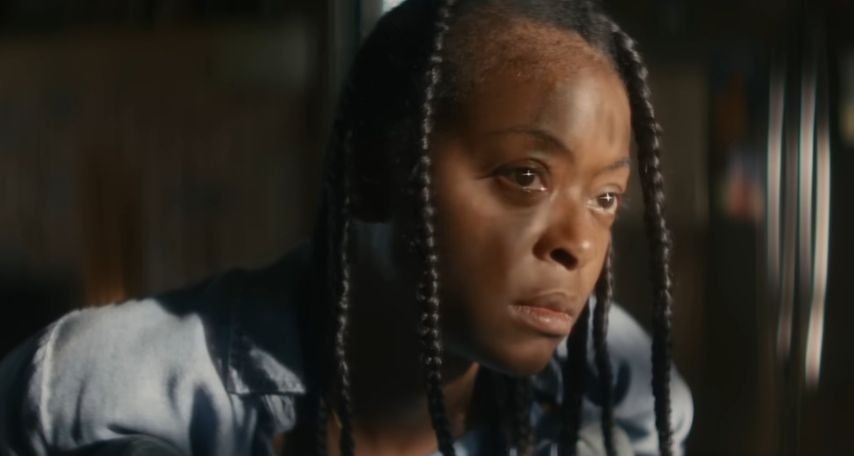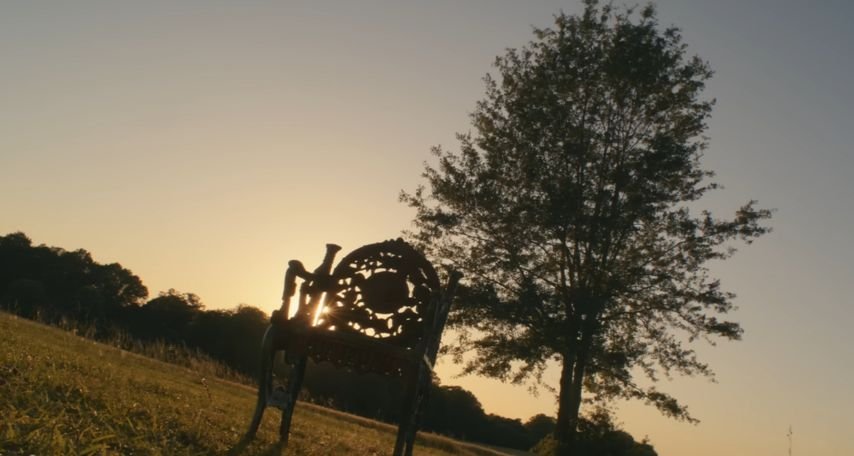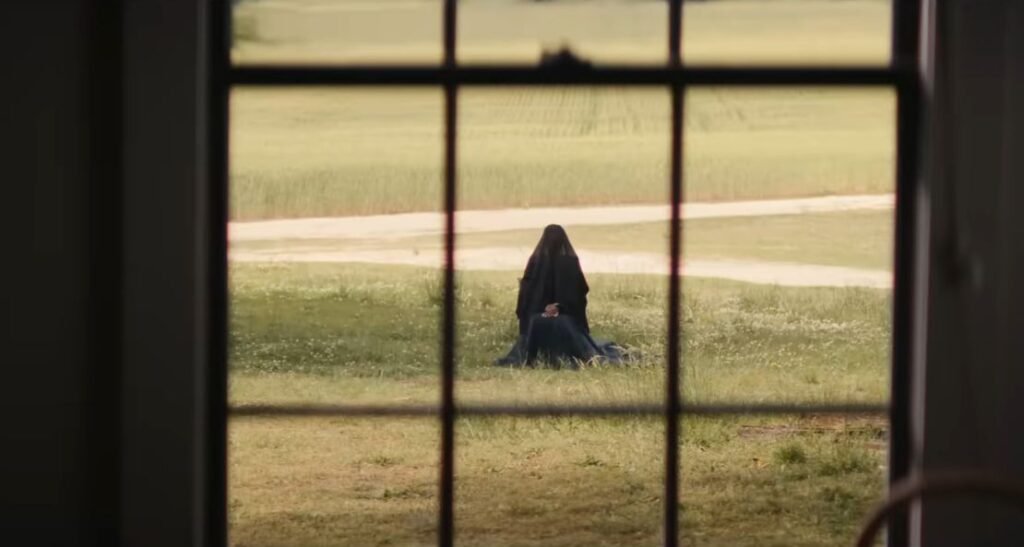You don’t need jump scares when the horror is already living with you. In The Woman in the Yard, the most terrifying thing isn’t what’s outside the window—it’s what’s festering inside the mind.
As the film creeps toward its ending, the supernatural tension gives way to something more psychological.
The veiled figure haunting Ramona’s front yard isn’t just a ghost. She’s something far more intimate—and far more dangerous.
Here’s what really happens in the final act, and what it tells us about trauma, guilt, and how grief can become its own kind of monster.
Who Is the Woman in the Yard?
Throughout the film, Ramona (Danielle Deadwyler) is plagued by the presence of a silent woman dressed in black, sitting just beyond her home.
The stranger says little more than “Today’s the day,” and refuses to leave. Ramona becomes increasingly unmoored, her behaviour erratic, her relationship with her children deteriorating.
At first, it’s easy to assume the Woman is a ghost, or perhaps a stalker with supernatural power. But as the story unravels, it becomes clear: the Woman is Ramona.
Or rather, she’s the physical embodiment of Ramona’s suicidal ideation—the personification of everything she’s trying not to feel.
This isn’t hidden. The film drops visual and thematic breadcrumbs throughout: the withered flowers, the shadow creeping closer whenever Ramona lashes out, the family’s missing dog, the chickens being killed off one by one.
These aren’t random acts of horror—they’re signals of Ramona’s spiralling psyche, her grasp on stability slipping as the Woman inches closer.
The Twist: Ramona Was Driving That Night
One of the film’s pivotal reveals arrives in the form of a flashback. Ramona wasn’t just grieving her husband’s death—she caused it.

She was the one driving the night of the crash, and they had been fighting in the car. She’d admitted she didn’t want the life they’d built together.
That she didn’t want to be a mother in a half-renovated farmhouse, or a wife trying to “make it work” in a home that never felt like hers.
When she sees the Woman for the first time—in the rearview mirror—it startles her. She veers off the road. Her husband dies. The guilt becomes unbearable.
But instead of telling her kids the truth, she says it was his fault. That she wasn’t even driving. She lies to them. And to herself. And the Woman stays.
The Final Confrontation: Suicide, Interrupted
In the film’s final act, Ramona comes to terms with what the Woman truly is. She remembers her prayer—not a plea for strength to carry on, but a plea for the strength to end it all. The Woman, in that sense, is a divine answer. A manifestation born not from faith, but despair.
Ramona tries to send her kids away. She tells them it’s safer if they leave. She plans to stay behind and “go” with the Woman. But it’s the children—particularly her son Taylor—who break the cycle. He forces her to admit what happened. He refuses to let her sink.
And that seems to be enough.
We’re then given a surreal resolution: Ramona steps outside and reunites with her children—and the dog. The farmhouse appears whole. There’s electricity. There’s warmth. A painting on the wall shows the Woman’s face, with Ramona’s name spelled backward beneath it.
It’s ambiguous whether this moment is literal, symbolic, or imagined. Has she truly conquered her shadow self? Or is this a dying vision of peace? The film doesn’t say. And honestly, it’s stronger for it.
What the Ending Really Means

The ending of The Woman in the Yard is about survival, but not in the traditional horror-movie sense. It’s not about escaping a monster—it’s about confronting one that lives inside you.
It’s about grief that morphs into guilt, and the quiet seduction of self-erasure when it feels like you’ve failed everyone.
Blumhouse has produced a lot of trauma-themed horror in recent years. But what sets this one apart—at least in its best moments—is that it’s not interested in jump scares.
It wants to sit in the discomfort of not being okay. It wants to ask: what if the scariest thing is having to keep going?
Whether the film delivers on that promise is up for debate. The execution, particularly in the final act, has its issues.
Critics have pointed out the muddled metaphor and uneven pacing. But the idea it tries to leave us with is clear: the Woman was never the threat. She was the invitation.
The real horror was in how close Ramona came to accepting it—a theme we explored in our full review of The Woman in the Yard.


